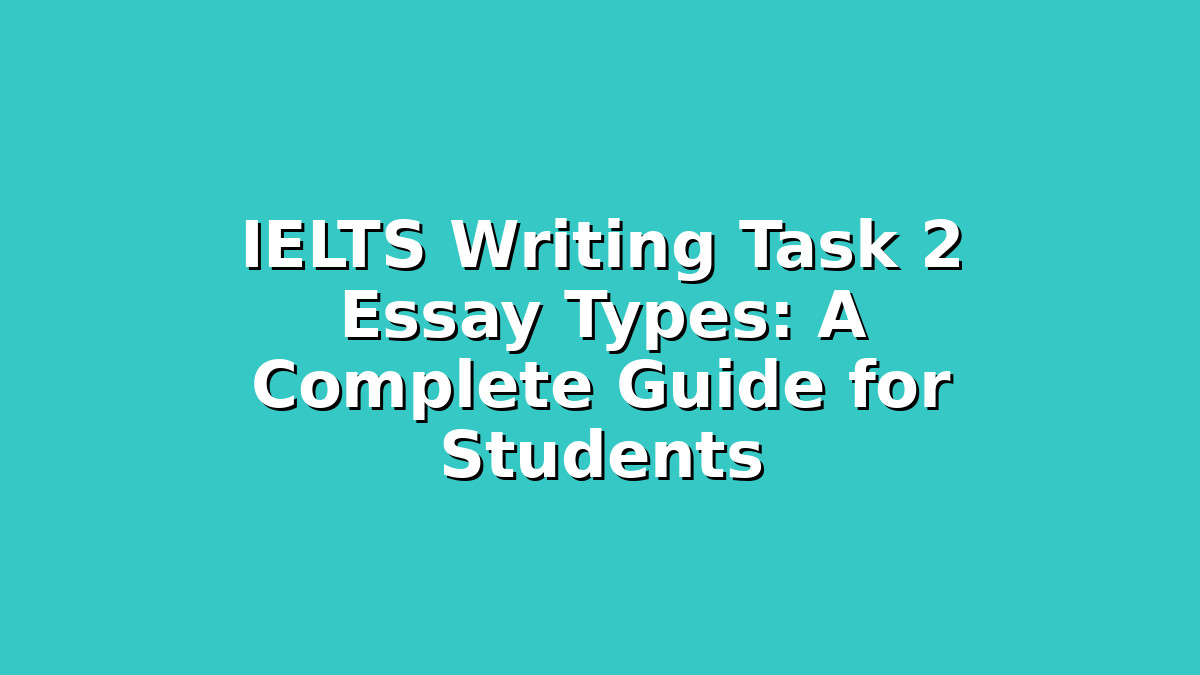Preparing for the IELTS exam can feel overwhelming, especially when it comes to the Writing Task 2 section. This part of the test requires you to write a formal essay in response to a prompt, and understanding the different essay types is key to scoring well. Whether you’re aiming to study abroad, apply for a job, or simply improve your English skills, mastering IELTS Writing Task 2 will boost your confidence and performance.
In this comprehensive guide, we will explore the main types of essays you may encounter in IELTS Writing Task 2, along with targeted study tips to help you prepare effectively. By the end, you’ll have a clear understanding of how to approach each essay type, plan your writing, and practice strategically.
1. Opinion Essays: Express Your View Clearly and Confidently
Opinion essays are among the most common in IELTS Writing Task 2. These prompts ask you to give your personal opinion on a topic and support it with reasons and examples. For example, you might be asked, “Do you agree or disagree with the statement that technology is making people less social?”
Key Features:
– You must clearly state your opinion in the introduction.
– Support your viewpoint with at least two reasons in the body paragraphs.
– Provide relevant examples to strengthen your argument.
– Address the opposing viewpoint briefly if possible (optional but recommended for higher scores).
Study Tips for Opinion Essays:
– Practice stating your opinion clearly. Write practice introductions that clearly say whether you agree or disagree.
– Build a bank of supporting ideas and examples. For common topics like technology, education, or environment, prepare reasons and real-life examples ahead of time.
– Use linking words such as “Firstly,” “In addition,” and “However” to organize your essay logically.
– Write full essays under timed conditions to improve fluency and coherence.
– Review sample opinion essays to understand the structure.
2. Discussion Essays: Present Both Sides Fairly
Discussion essays ask you to discuss two opposing views and sometimes provide your own opinion. For instance, a prompt may say, “Some people think that governments should spend more on education than on recreation. Discuss both views and give your opinion.”
Key Features:
– You need to introduce the topic and mention both views.
– Devote a paragraph to each side of the argument.
– Clearly express your own opinion in the conclusion (if the prompt asks for it).
– Maintain a balanced and objective tone while discussing different perspectives.
Study Tips for Discussion Essays:
– Master paragraph structure. One paragraph for each viewpoint helps keep your essay organized.
– Practice neutrality. When describing opposing views, avoid biased language; just present the facts or opinions.
– Develop vocabulary for contrasting ideas. Phrases like “On the one hand,” “In contrast,” and “On the other hand” are essential.
– Create outlines before writing. Planning helps you allocate ideas and examples for each side efficiently.
– Practice writing conclusions that summarize both views and clearly state your opinion.
3. Problem-Solution Essays: Identify Issues and Suggest Fixes
Problem-solution essays require you to describe a particular problem and propose one or more solutions. For example, “Urban traffic congestion is a growing problem in many cities. What are the causes and what solutions can be implemented?”
Key Features:
– Clearly explain the problem, including causes or effects.
– Suggest practical, relevant solutions.
– Support your points with examples or evidence.
– Structure your essay with separate paragraphs for problems and solutions.
Study Tips for Problem-Solution Essays:
– Understand the problem deeply. Practice analyzing causes and effects for various issues.
– Brainstorm feasible solutions. Think about what’s realistic and can be implemented in real life.
– Learn phrases for problem explanation and solution suggestion. For example, “One major issue is…,” “A possible solution would be…,” or “To tackle this problem…”
– Include examples and explain how solutions work to demonstrate clear thinking.
– Practice writing under timed conditions to build fluency.
—
Additional General Tips for IELTS Writing Task 2 Success
– Read the prompt carefully. Make sure you understand what type of essay is required.
– Plan your essay before writing. Spend 5 minutes outlining your main points.
– Keep your essay focused. Avoid going off-topic or including irrelevant information.
– Use a variety of sentence structures and vocabulary. This will improve your lexical resource and grammar scores.
– Practice editing your essays. Check for grammar mistakes, spelling errors, and clarity.
– Seek feedback from teachers or online forums. Constructive criticism helps you improve faster.
—
Conclusion
Mastering the different types of IELTS Writing Task 2 essays is essential for achieving a high band score. Whether you are writing an opinion essay, a discussion essay, or a problem-solution essay, understanding the structure and key requirements will help you organize your thoughts and express your ideas clearly. Remember to practice regularly, plan your essays carefully, and review sample answers to build your confidence. With consistent effort and the right strategies, you’ll be well-prepared to tackle the Writing Task 2 section and reach your desired IELTS score. Keep going—you’ve got this!

Responses